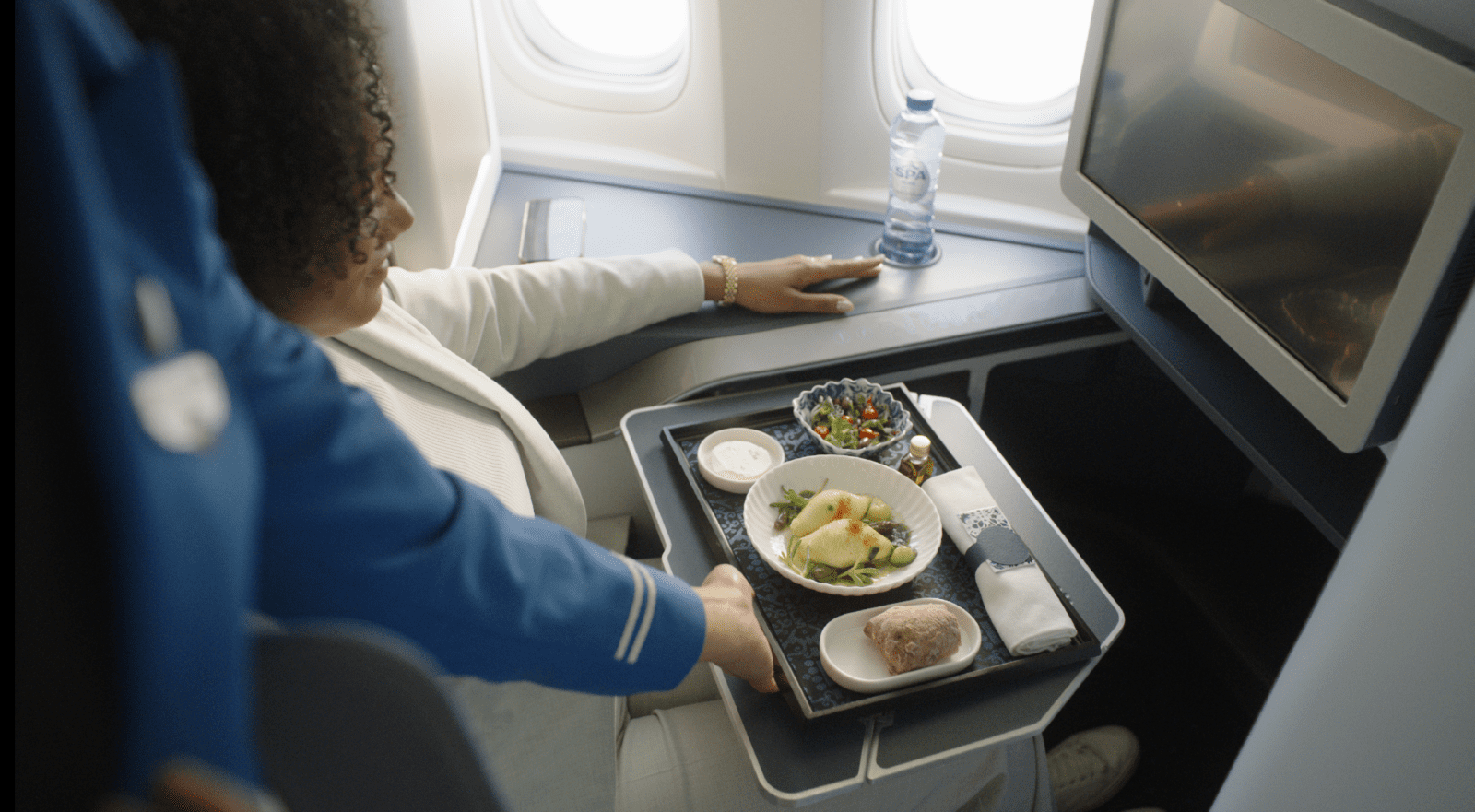
Dutch airline KLM is using its own artificial intelligence model to cut down on food waste by predicting how many people won’t actually turn up for their flight. As a result, the airline is able to reduce the number of meals it loads on flights, matching the actual passenger load.
KLM says that between 3% and 5% of passengers don’t show up for their flights on time, resulting in meals going to waste. The AI system aims to predict how many passengers on any given service will miss their flight and then adjusts the loading of meals.
In a three-month trial, KLM says that the system helped to slash food waste by 63% compared to the old method of simply loading enough meals for every booked passenger.
Developed specifically for KLM by Kickstart AI, the system starts working 17 days before departure and up to 20 minutes before pushback. Nicknamed TRAYS, the system has helped KLM save around 2.5 meals per flight on long-haul transcontinental services.
AI is fast becoming a buzzword within the airline industry, although concrete examples of how artificial intelligence is actually helping to improve operations are often hard to come by.
KLM, however, says it’s utilising artificial intelligence in several other areas of its business, including “making aircraft maintenance smarter”.
“Investments in digital technology are a priority for KLM. The application of artificial intelligence contributes enormously to improving our flight operations and making them more sustainable,” commented CEO Marjan Rintel.
“Combatting food waste is a good example of this, resulting in tens of thousands fewer meals being wasted on our flights each year.”
KLM did not say what would happen if passengers beat the AI model and managed to make their flight.
Mateusz Maszczynski honed his skills as an international flight attendant at the most prominent airline in the Middle East and has been flying ever since... most recently for a well known European airline. Matt is passionate about the aviation industry and has become an expert in passenger experience and human-centric stories. Always keeping an ear close to the ground, Matt's industry insights, analysis and news coverage is frequently relied upon by some of the biggest names in journalism.







